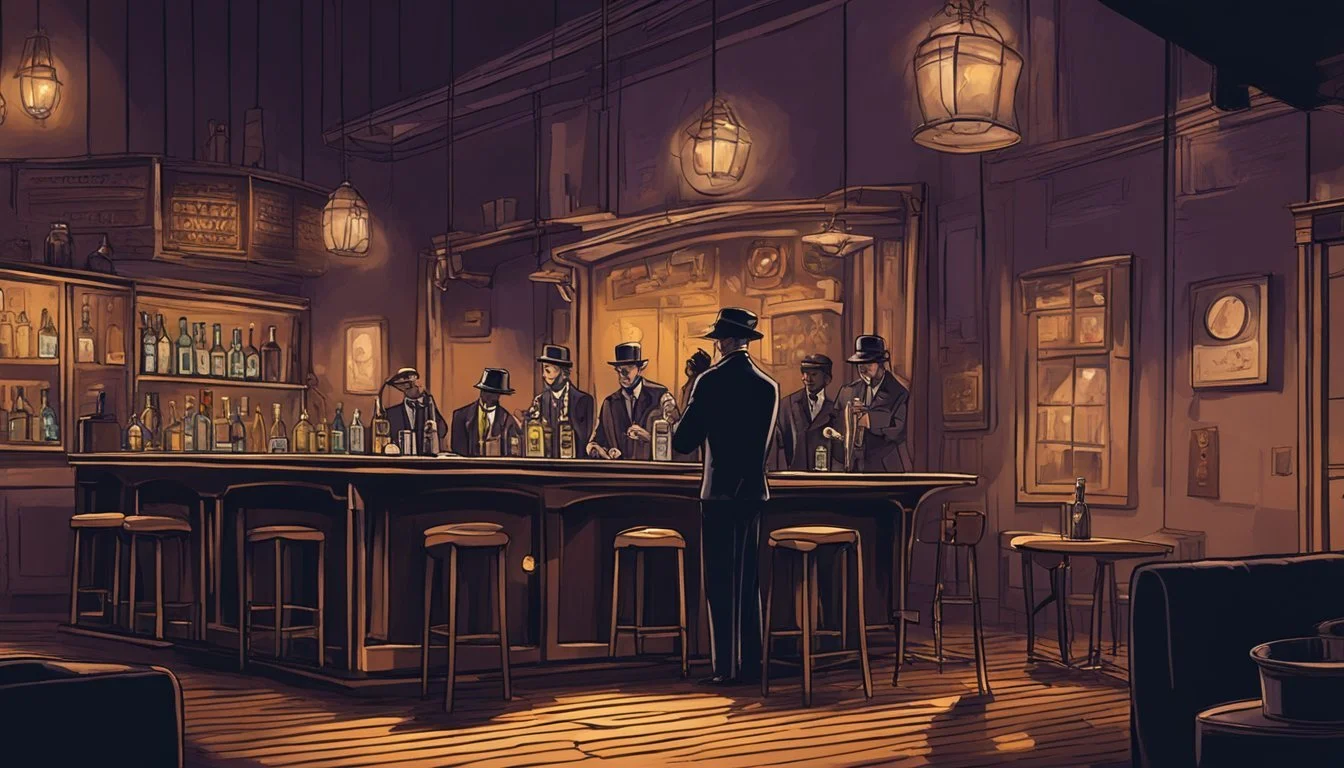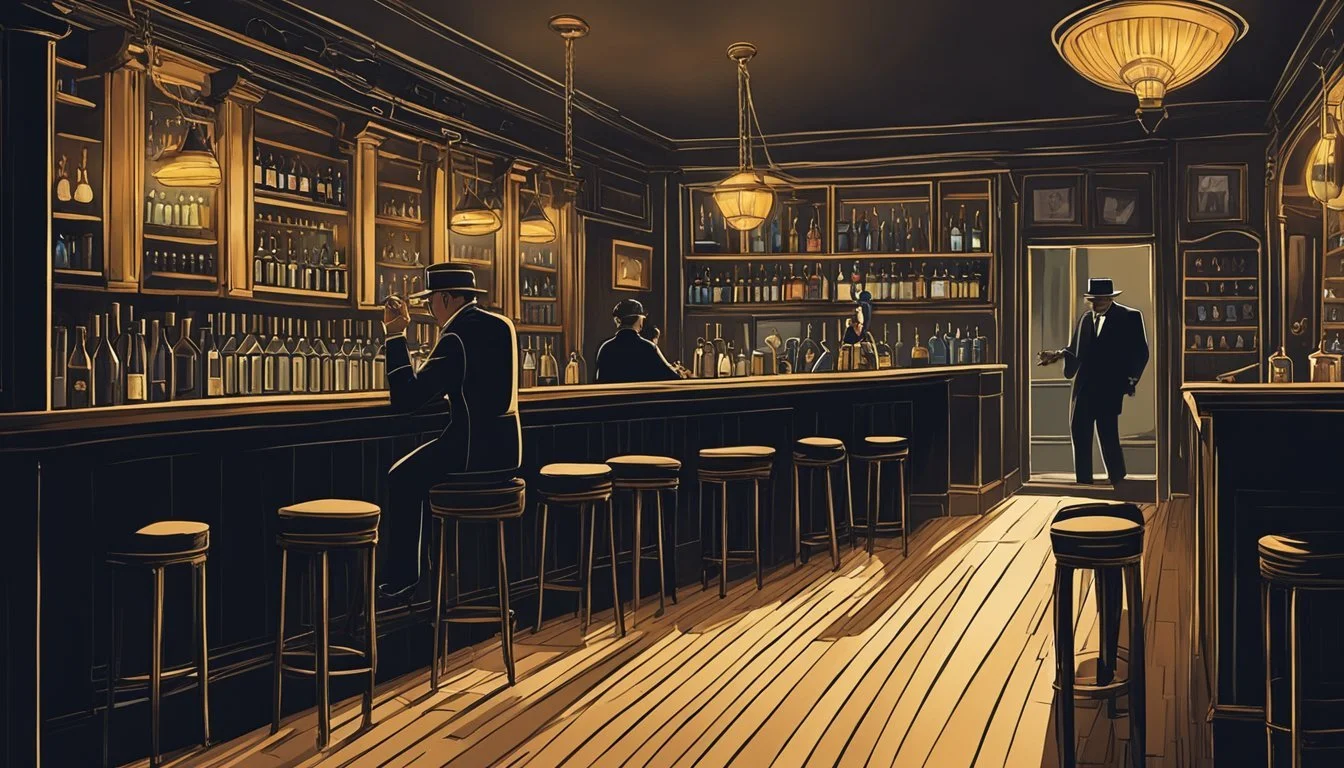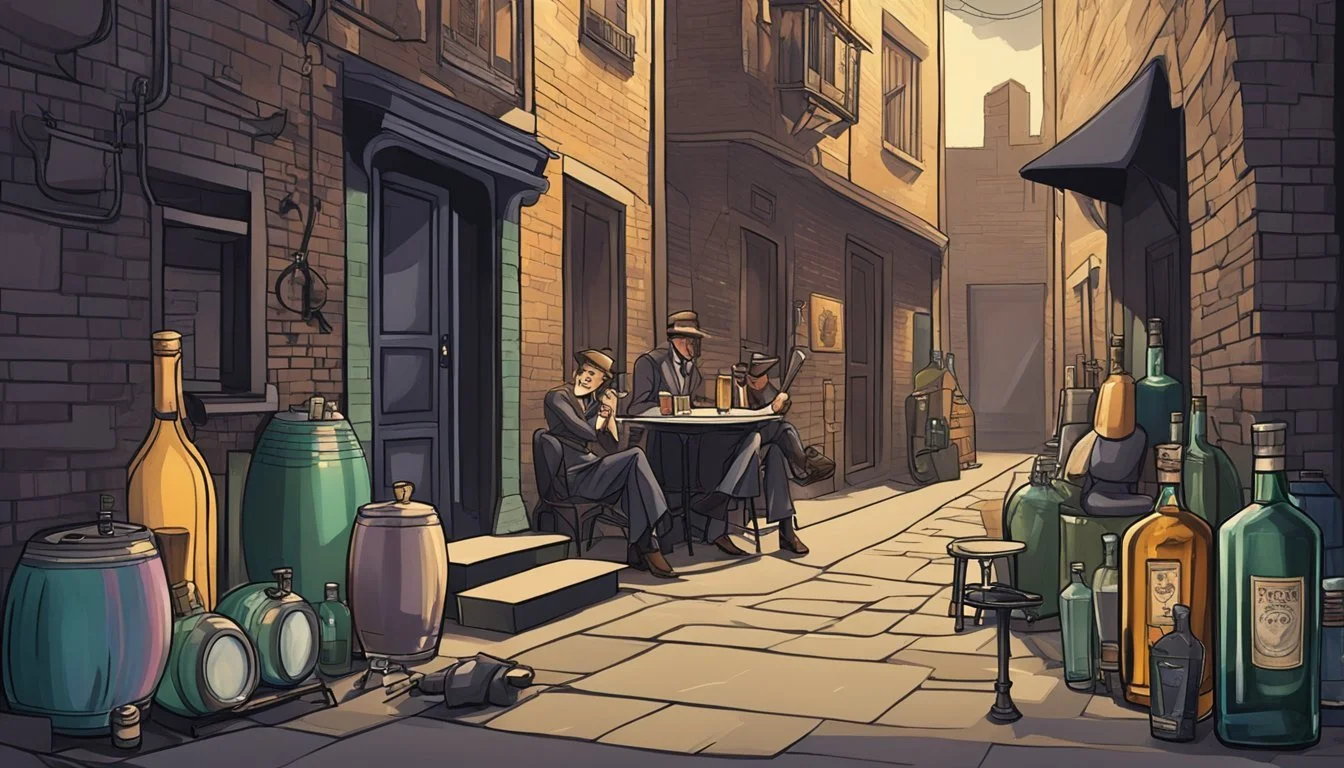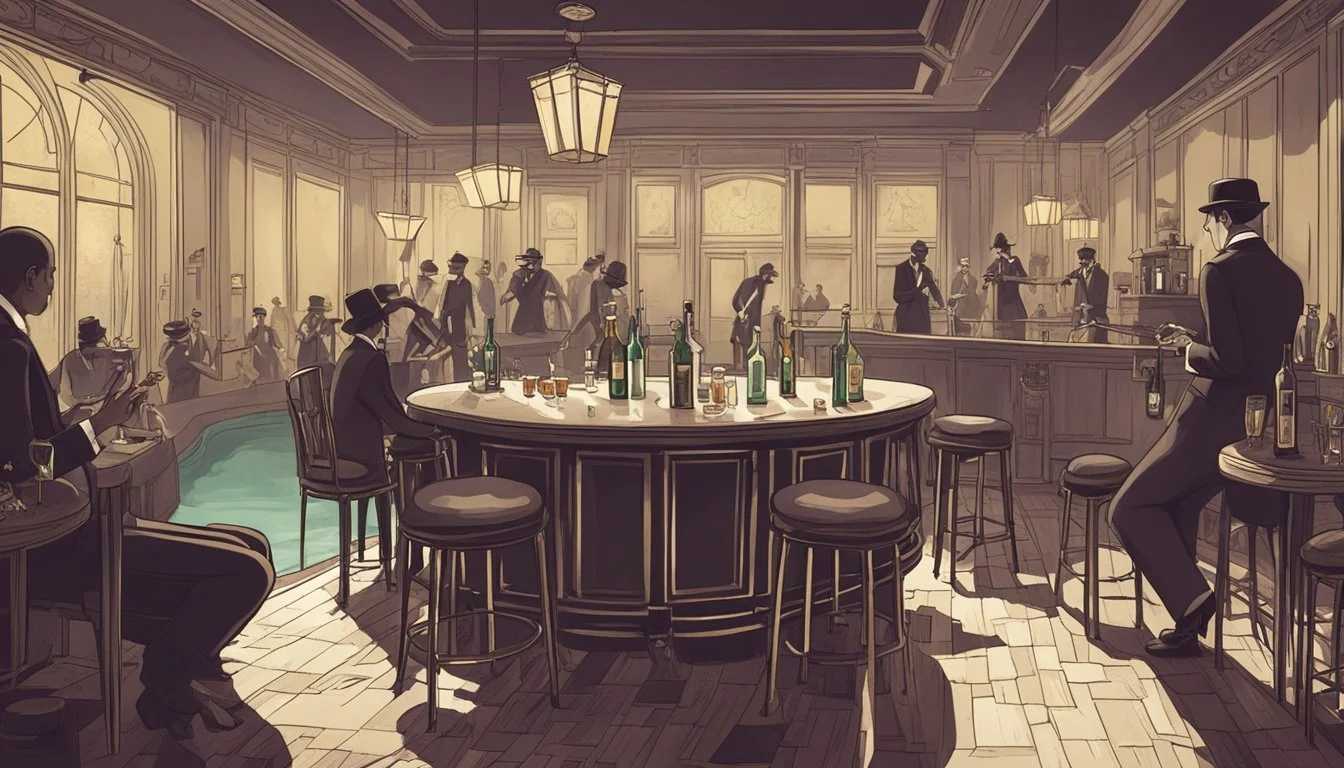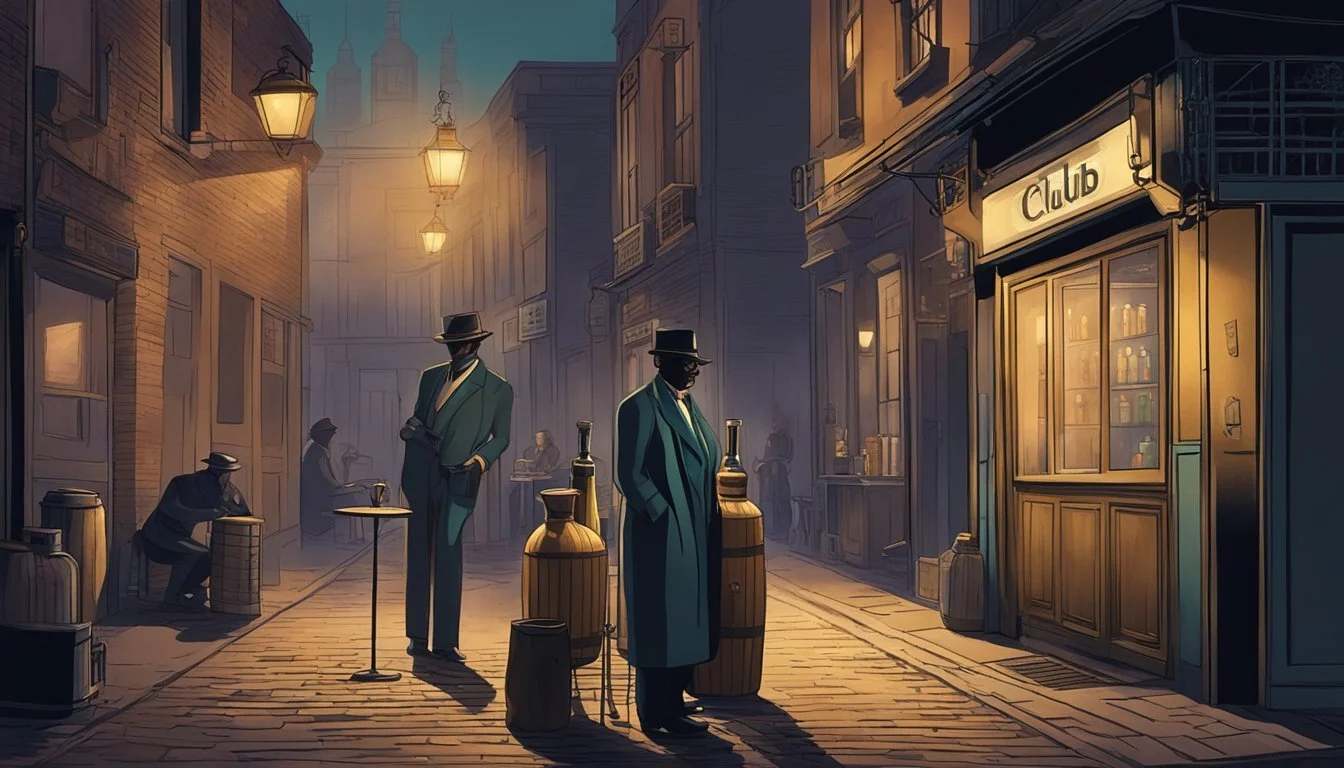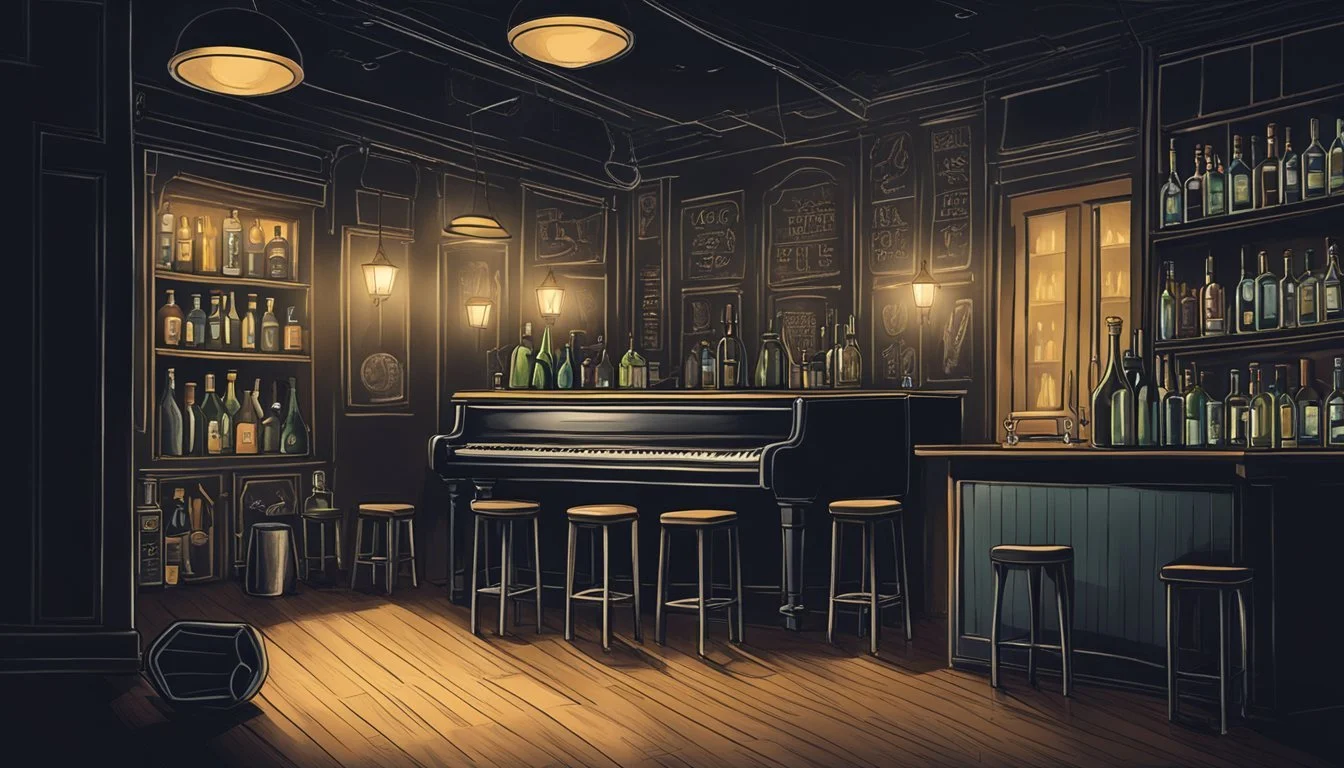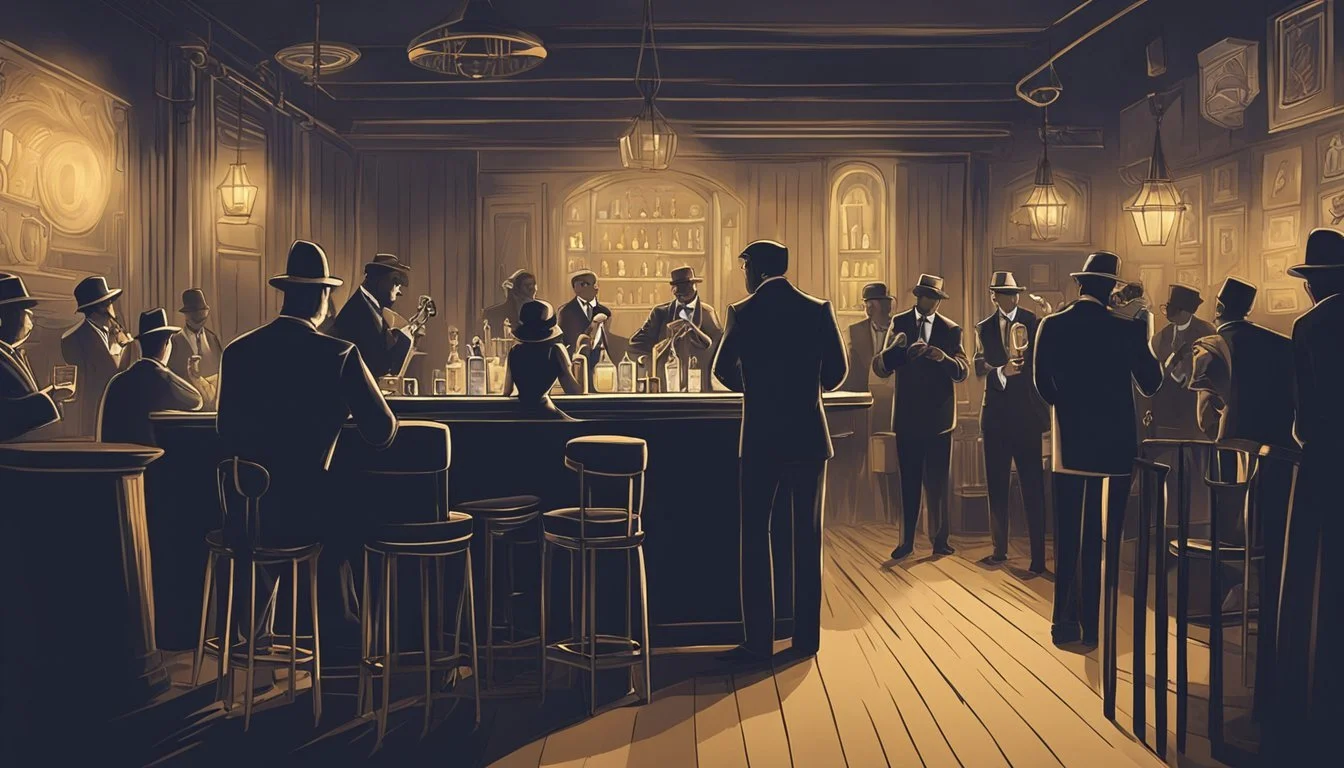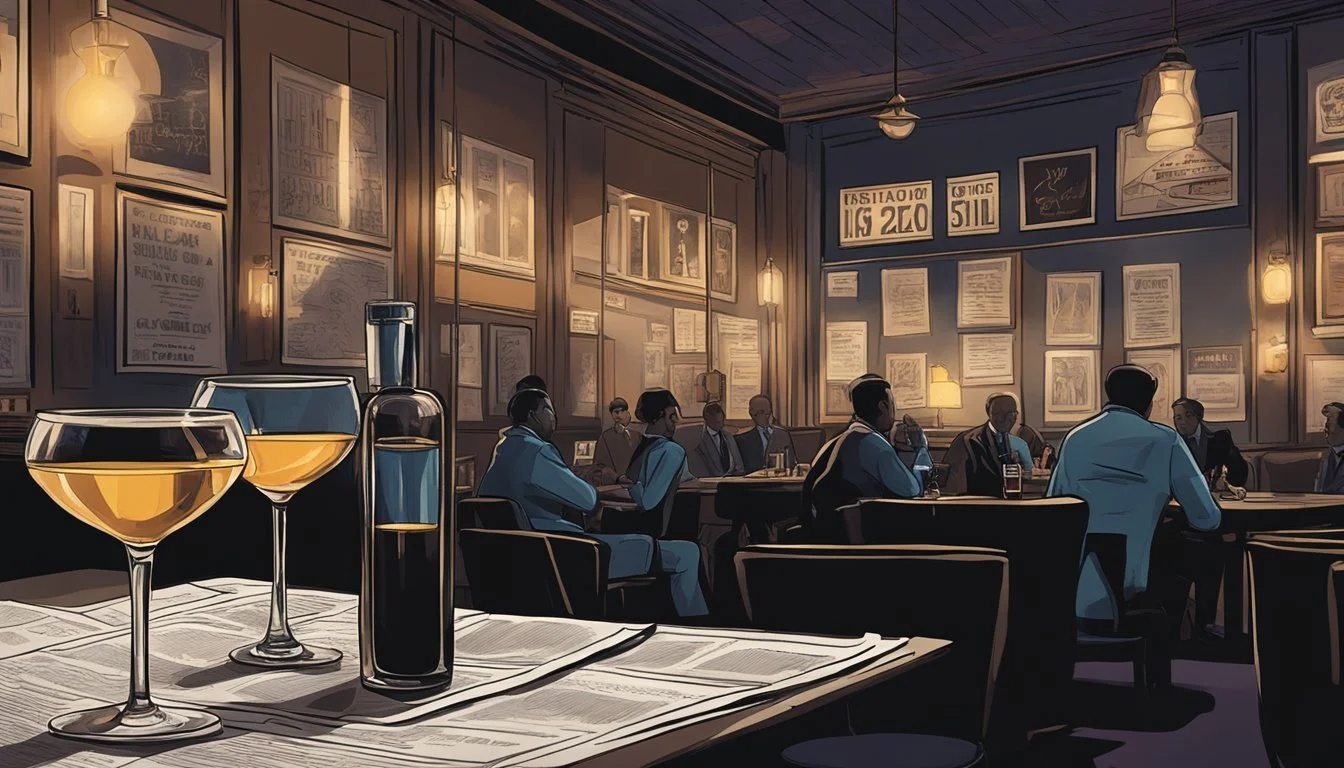Jazz, Gin, and Homicide: The Real Crimes Behind 'Chicago'
Unveiling the True Stories That Inspired the Musical
The glittering world of 1920s Chicago set the stage for a sensational collision of crime, media, and entertainment that would captivate audiences for generations. Behind the dazzling musical "Chicago" lies a fascinating true story of murder, scandal, and the birth of the celebrity criminal.
The real-life inspirations for Roxie Hart and Velma Kelly were actual women accused of killing men in Jazz Age Chicago. These femmes fatales captured the public imagination through sensationalized newspaper coverage and clever manipulation of the press. Their glamorous personas and shocking crimes became the talk of the town, blurring the lines between justice and spectacle.
The musical draws from several high-profile cases, including that of Beulah Annan, who shot her lover in 1924, and Belva Gaertner, accused of murdering a married man. These women and others like them became known as "merry murderesses," their stories emblematic of an era marked by shifting social norms, prohibition-fueled vice, and a burgeoning celebrity culture that turned even accused killers into overnight sensations.
The Historical Backdrop of 'Chicago'
The 1920s Chicago was a city of stark contrasts, where glitz and glamour coexisted with crime and corruption. This era set the stage for the musical 'Chicago', drawing inspiration from real-life events and personalities that captured the public's imagination.
Jazz Age and Prohibition
The Jazz Age brought unprecedented cultural shifts to Chicago. Speakeasies flourished, offering illicit alcohol and pulsating jazz rhythms. These underground clubs became hotbeds of vice and entertainment.
Prohibition fueled a booming black market for alcohol. Bootleggers and gangsters profited immensely, often bribing law enforcement to turn a blind eye.
The city's nightlife thrived despite legal restrictions. Flappers challenged social norms with their bold fashion and behavior. This era of excess and rebellion laid the groundwork for 'Chicago's' theatrical depiction.
Prohibition-Era Crime Waves
Chicago's crime rate soared during Prohibition. Gang violence escalated as rival factions fought for control of illegal liquor distribution. Drive-by shootings and mob hits became frequent occurrences.
Corruption infiltrated every level of society. Politicians, police officers, and judges were often on gangsters' payrolls. This systemic corruption allowed criminal empires to flourish.
The media sensationalized crime stories, turning criminals into celebrities. Newspapers competed for the most salacious headlines, blurring the lines between news and entertainment.
Icons of the Era: Beulah Annan and Velma Kelly
Beulah Annan, the real-life inspiration for Roxie Hart, shot her lover in 1924. Her trial became a media circus, with Annan playing up her innocent appearance for the press and jury.
Her lawyer, W.W. O'Brien, crafted a sympathetic narrative that captivated the public. Annan's acquittal highlighted the power of media manipulation and public opinion in the justice system.
Velma Kelly's character drew inspiration from Belva Gaertner, another glamorous defendant. Gaertner's jazz-age lifestyle and scandalous trial paralleled the fictional Kelly's story. These women's cases exemplified the era's fascination with crime and celebrity.
Understanding Homicide in Chicago
Chicago's complex history of homicide reveals deep social and systemic issues. Gang activity, gun violence, and the criminal justice system's response have shaped the city's struggles with violent crime.
The Sociology of Murder
Chicago's homicide patterns reflect socioeconomic disparities and racial segregation. Concentrated poverty in certain neighborhoods correlates with higher murder rates. African American communities are disproportionately impacted, with young men at greatest risk.
Familial breakdown and lack of economic opportunities contribute to a cycle of violence. Some areas experience a "culture of honor" where perceived disrespect can escalate to deadly conflict.
Drug trade disputes often lead to homicides. Revenge killings perpetuate ongoing cycles of retaliation between rival groups.
Gang Influence and Gun Violence
Street gangs play a significant role in Chicago's homicide problem. Gangs control drug markets and use violence to protect territory. Initiation rituals and inter-gang conflicts frequently turn deadly.
Easy access to illegal firearms exacerbates gang violence. Straw purchases and gun trafficking bring weapons into high-crime areas. Drive-by shootings and other gang-related gun crimes claim many lives each year.
Gang recruitment of youth perpetuates the cycle. Children as young as 11 or 12 may be drawn into gang activity, putting them at risk of violence.
The Role of Law and the Criminal Justice System
Chicago police face challenges in solving homicides, with clearance rates below the national average. Witness intimidation and lack of community trust hinder investigations.
Controversial police tactics like stop-and-frisk have strained community relations. Critics argue aggressive policing fuels distrust without effectively reducing violence.
Prosecutors struggle to secure convictions in gang-related murders. Witness protection programs aim to combat intimidation but face funding limitations.
Sentencing reforms seek to balance public safety with concerns about mass incarceration. Some argue tougher sentences deter crime, while others push for rehabilitation programs.
Chicago's Criminal Chronicles
Chicago's underworld in the 1920s was rife with sensational crimes that captured public attention. The city's newspapers, particularly the Chicago Tribune, played a crucial role in chronicling these notorious cases.
Notable True Crime Stories
The 1924 Leopold and Loeb case shocked the nation. Nathan Leopold and Richard Loeb, wealthy University of Chicago students, kidnapped and murdered 14-year-old Bobby Franks. Their motive? To commit the "perfect crime."
Belva Gaertner's 1924 trial for the murder of Walter Law became a media spectacle. Gaertner, a cabaret singer, was found acquitted despite strong evidence against her.
In 1927, Ruth Snyder and her lover Judd Gray were convicted of murdering Snyder's husband. The case gained notoriety when a hidden camera captured Snyder's execution, resulting in a famous front-page photo.
The Chicago Tribune's Coverage
The Chicago Tribune was at the forefront of reporting on the city's criminal underbelly. Its reporters, like Maurine Watkins, brought these stories to life with vivid details and courtroom drama.
Watkins' coverage of the Belva Gaertner case inspired her play "Chicago," which later became the famous musical. Her articles painted a picture of Jazz Age excess and criminal glamour.
The Tribune's sensational headlines and in-depth reporting on cases like the St. Valentine's Day Massacre helped shape public perception of Chicago's crime landscape. Its coverage often blurred the lines between news and entertainment, reflecting the era's fascination with true crime stories.
Crime Investigation Dynamics
The investigation of crimes in 1920s Chicago involved intricate police procedures and detective work. Law enforcement faced unique challenges in gathering evidence and solving cases during this era of widespread corruption and organized crime.
The Police Department's Response
Chicago's police force in the 1920s was notoriously understaffed and underfunded. The department struggled to keep up with the rising crime rate, particularly homicides related to bootlegging and gang activity.
Officers often arrived at crime scenes hours after incidents occurred. This delay hampered evidence collection and witness interviews.
Corruption within the force further complicated investigations. Some officers took bribes from criminal organizations, impeding legitimate police work.
The department relied heavily on informants and tipsters to gather intelligence on criminal activities. This network of sources proved crucial in navigating Chicago's complex underworld.
Detective Work and Evidence Gathering
Chicago's detective bureau employed various techniques to solve crimes. Fingerprinting became more widely used in the 1920s, helping identify suspects.
Detectives meticulously documented crime scenes through photographs and sketches. They collected physical evidence such as weapons, clothing fibers, and bullets for analysis.
Witness statements played a vital role in investigations. Detectives conducted extensive interviews, often facing reluctant or intimidated witnesses.
Forensic science was in its infancy. Blood typing and rudimentary ballistics analysis provided some insights, but many modern techniques were unavailable.
Detectives used surveillance and stakeouts to track suspects. They maintained extensive files on known criminals and their associates.
Despite these efforts, many high-profile cases remained unsolved due to lack of evidence or interference from corrupt officials.
Effects of Crime on Society
Crime profoundly shapes communities, families, and economic structures. Its ripple effects touch victims, perpetrators, and bystanders alike, altering the social fabric and financial stability of affected areas.
Impact on Communities and Families
Crime erodes community trust and cohesion. Neighborhoods plagued by criminal activity often experience heightened fear and anxiety among residents. This can lead to decreased social interaction and community engagement.
Families of both victims and offenders face significant challenges. Parents may struggle to protect their children from negative influences. Young people in high-crime areas are at increased risk of becoming victims or being drawn into criminal behavior themselves.
Victims of crime frequently suffer long-lasting psychological effects. These can include trauma, depression, and difficulty maintaining relationships or employment. The impact extends beyond individuals to their support networks and wider social circles.
Economic Factors and Crime Rates
Poverty and unemployment correlate strongly with higher crime rates. Areas with limited economic opportunities often see increased property crimes and violent offenses. This creates a cycle where crime further depresses economic growth.
High crime rates deter business investment and tourism. This leads to fewer job opportunities and reduced tax revenue for affected communities. The resulting economic strain can exacerbate social problems and potentially fuel more criminal activity.
Law enforcement and criminal justice costs rise in high-crime areas. This diverts public resources from education, healthcare, and infrastructure improvements. The economic burden of crime extends to increased insurance premiums and private security expenses for residents and businesses.
Media and Public Perception
Media plays a crucial role in shaping public perception of crime and justice. Celebrities and true crime stories often capture widespread attention, influencing how people view criminal events and legal proceedings.
The Role of Celebrities in Crime Narratives
Celebrity involvement in crimes tends to dominate headlines and public discourse. High-profile cases in Chicago have attracted intense media scrutiny. The OJ Simpson trial, though not in Chicago, exemplifies how a celebrity defendant can captivate national attention.
In Chicago, the Rod Blagojevich corruption scandal garnered extensive coverage due to his status as a former governor. Such cases often overshadow more common crimes, potentially skewing public perception of criminal justice issues.
Media portrayal of celebrity crimes can impact jury selection and trial outcomes. The intense publicity surrounding these cases may lead to changes of venue or extensive voir dire processes to ensure fair trials.
Podcasts and Literature: Narrating Chicago's Crimes
True crime podcasts have surged in popularity, offering in-depth explorations of Chicago's criminal history. Shows like "Motive" by WBEZ Chicago delve into specific cases, providing context often missing from news reports.
Books also play a significant role in shaping narratives around Chicago's crime history. Erik Larson's "The Devil in the White City" brought renewed attention to H.H. Holmes and the 1893 World's Fair murders.
The Chicago Public Library system has embraced this interest, offering curated lists of true crime books and hosting author events. These resources allow residents to engage more deeply with the city's complex criminal past.
Podcasts and literature often provide nuanced perspectives on Chicago's crimes, exploring societal factors and historical contexts that may be overlooked in shorter news segments.
Statistical Overview and Analysis
Chicago's crime trends reveal complex patterns in homicide rates and comparisons to other major cities. Racial disparities and geographic concentrations play significant roles in shaping the city's crime statistics.
Homicide Statistics and Trends
Chicago's homicide rates have fluctuated over recent years. In 2019, the city recorded 492 homicides. This number rose sharply to 769 in 2020, marking a 56% increase. 2021 saw a slight decrease to 797 homicides.
Racial disparities in homicide victimization remain stark. Black residents face a disproportionately high risk, with rates 20 times higher than white residents in 2023. This gap has narrowed by 50% since 2021, indicating some progress.
Seasonal patterns emerge in shooting incidents. Summer months account for 38% of annual shootings, with July alone representing 12%. These incidents cluster geographically, with 25% of the city's grid cells experiencing shootings.
Comparing Chicago to Other Cities
Chicago's homicide rate of 23-24 per 100,000 residents aligns with its 50-year average. This rate exceeds those of global cities like New York and Los Angeles but mirrors trends in Rust Belt cities such as Cleveland and Milwaukee.
Violent crime reporting varies across major cities. Chicago, along with New York City, Philadelphia, New Orleans, and Milwaukee, has faced scrutiny for potential misreporting of crime statistics. Nationwide, only 40.9% of violent crimes are reported to police.
Chicago's crime patterns reflect broader urban trends but with distinct local characteristics. The city's efforts to address crime must consider these unique factors alongside national comparisons.
Leadership and Reform
Chicago's police department underwent significant changes in response to high-profile incidents and public pressure. Key reforms aimed to increase accountability, rebuild community trust, and reduce violent crime rates in the city.
Chicago Police Board and Leadership Changes
The Chicago Police Board plays a crucial role in overseeing the police department. In 2016, the Board appointed Eddie Johnson as Superintendent of Police. Johnson, a 27-year veteran of the force, pledged to restore public confidence and implement reforms.
The Board also revised disciplinary procedures and increased transparency in police misconduct cases. They established a new policy requiring the release of body camera footage within 60 days of incidents involving officer-involved shootings or deaths in custody.
Reactions to High-Profile Incidents
The shooting of Laquan McDonald in 2014 sparked widespread protests and calls for reform. The incident led to the firing of Police Superintendent Garry McCarthy and increased scrutiny of police practices.
Rev. Jesse Jackson and other community leaders demanded accountability and changes to police training. The U.S. Department of Justice launched a civil rights investigation into the Chicago Police Department's patterns and practices.
These events catalyzed efforts to improve police-community relations and address systemic issues within the department.
The Path Towards Reducing Homicides
Chicago implemented several strategies to combat its high homicide rate:
Expanded use of technology:
ShotSpotter gunshot detection systems
Strategic Decision Support Centers for real-time crime analysis
Community policing initiatives:
Increased foot patrols in high-crime areas
Youth mentorship programs
Collaboration with federal agencies:
Joint task forces to target gun trafficking
Enhanced prosecution of repeat violent offenders
These efforts showed promising results, with homicide rates declining in subsequent years. However, challenges remain in sustaining long-term reductions in violent crime and maintaining community trust.
Looking Forward
Crime prevention efforts in Chicago are evolving to address modern challenges. Innovative strategies aim to enhance public safety and rebuild community trust through data-driven approaches and collaborative initiatives.
Future Initiatives for Safety and Trust
The University of Chicago Crime Lab spearheads research on effective crime reduction strategies. Their work focuses on evidence-based interventions tailored to Chicago's unique needs. One promising initiative involves predictive policing, using data analytics to identify high-risk areas and allocate resources more efficiently.
Police departments are embracing technology to improve transparency. Body cameras and public data portals allow citizens to access information about police activities. This openness aims to rebuild trust between law enforcement and communities.
Mental health response teams are being integrated into emergency services. These specialized units respond to crisis calls, providing appropriate care and reducing potentially volatile police interactions.
Empowering Communities Against Crime
Neighborhood watch programs are getting a digital upgrade. Mobile apps now connect residents, allowing real-time sharing of safety information. These platforms foster community engagement and aid in crime prevention.
Youth mentorship programs target at-risk individuals, offering support and positive alternatives to crime. Local businesses partner with schools to provide internships and job training, creating paths to economic stability.
Community policing initiatives emphasize relationship-building between officers and residents. Regular community meetings and events help foster dialogue and mutual understanding.
Crime prevention through environmental design (CPTED) principles are being applied to urban planning. This approach uses architectural and landscape design to naturally deter criminal activity.

